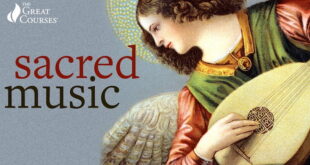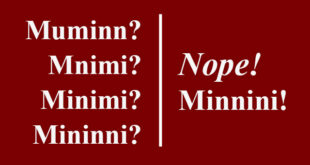New York’s Museum of Modern Art paid tribute to actress Claudia Cardinale in February with a retrospective of 23 films, including 17 restorations. The collaboration between MoMA and Cinecittà in Rome drew audiences to the heart of Manhattan to watch a treasure trove of beloved cinema classics. Cardinale’s daughter, Claudia Squitieri, introduced the first film of the series, Luigi Comencini’s 1963 “La ragazza di Bube” (Bebo’s Girl), which was followed by the new documentary, “Un Cardinale donna” by Manuel Maria Perrone. Born in Tunisia in 1938 to Sicilian parents, Cardinale attended elementary school in the ancient city of Carthage. Her …
Read More »Getting there with “a” and “in”
Use the Italian “in” for Italian Regions Both Italian prepositions “a” and “in” can be used to describe where someone is going, as well as their destination when they arrive. The Italian “a” can be translated as both “to” or “in” in English. The Italian “in” is translated the same as in English — “in”! In simple terms, Italian prepositions are linked to the place that they describe. We’ve already learned the basics of how to use the Italian prepositions a and in in our first blog on this topic, Italian Preposition “A” or “In”? The general rule, stated again, …
Read More »A journey of 35 years
As a third-generation Italian American born in the baby boomer era, I remember growing up getting bits and pieces from my parents about my paternal grandparents who emigrated from Southern Italy around 1910. My aunts and uncles also provided insight into their upbringing as children of Italian immigrant parents. I grew up in the Little Italy of South Philadelphia, and my childhood was filled with the typical Italian-American experience of family traditions that so many of us enjoy. In my mid-20s, I started to wonder about my family tree: Where did my grandparents, Francesco and Caterina Leto, come from in …
Read More »Keeping out the cold
Prevention is the key if you want to protect your home and utility bill from the winter chill. You can stay one step ahead of the polar vortex with a few quick fixes. Quick Fix #1 Cracks in the foundation can let cold as well as water in. Keep a lookout for them and seal them as soon as you see them. Do this crucial maintenance in the fall, before the first freeze. Quick Fix #2 Keep your pipes insulated, especially if they are located in a cool, dark area such as a crawl space. There are a number of …
Read More »Decoding rough handwriting
Last month, we went over some tricky problems with handwriting in old Italian records. We have to use some simple techniques to help you read the records with less effort and more accuracy. These techniques may not work in every situation but they are a standard logic to help you reduce the number of possible letters to choose from in each word. You may see a very poorly written word that looks at first glance like Mrysiclush, but that doesn’t make sense in Italian no matter what part of the record you are reading. Handwriting tip #1 is the easiest …
Read More »Memories of Easters past
With the frigid temperatures (hopefully) a distant memory, we can now set our sights on the warmer months to come. The one pleasure of surviving a Chicago winter is planning to make the best possible use of the coming good weather. Right now, we’re in the midst of Lent which began on February 22, and we’re looking forward to our Easter celebration on April 9. Easter was always a big deal at St. Anthony of Padua Parish on Kensington Avenue. Back in the 1950s and before, Catholicism was in full stride in our part of Roseland and the many reminders …
Read More »Video series tracks evolution of sacred music in Catholicism
The official music of the Roman Catholic Church for hundreds of years was Gregorian chant, which consists of Latin verses sung to a solemn melody without accompaniment. The calm, ethereal tone of Gregorian chant was meant to set the musical stage for the prayers and rituals of the Mass. It was named after Pope Gregory I, who was credited with creating it, although it actually evolved over the course of centuries. Several thousand chants are known today and most of them date from 600-1300 A.D. However, there is virtually no record of the composers who created them. Because of the …
Read More »Being polite with “volere”
The Italian Verb Volere Volere means “to want” or “to desire,” and is classified as a modal, or helping verb. This means that volere provides information about one’s wish or intention to complete the main action described in a sentence. When used in this way, volere is conjugated to reflect the speaker and the action verb follows directly after in its infinitive form — that is, the action verb is not conjugated! (Remember that Italian verbs are categorized into three infinitive forms by the following endings: -are, -ere, and -ire, and that English infinitive verbs are preceded by “to,” as in, …
Read More »An Italian Valentine’s Day
Over the centuries, writers have pondered the question, “Che cos’è l’amore?” “What is love?” And since the Italian poet Petrarch expressed his great love for Laura in the 14th century, love poems have often taken the form of he used — the sonetto, or sonnet. These “little songs” are 14 lines long and follow a specific rhythm and rhyme scheme. When Shakespeare took up the sonnet in the 16th Century, he changed Petrarch’s form and made it his own; Shakespeare used the sonnet to write some of the most famous lines about love in existence today. Shakespeare’s contemporaries and many poets who …
Read More »Decoding records indexes
Let’s discuss how this all works. Most records are hand-written. Problem number one. So for them to be indexed on-line, someone has to read them and type them in. This, of course, is called “indexing.” I know they are working on computer technology to try to read handwriting and convert it into computer text, but let’s presume that such technology is a long way from perfection, especially when reading handwriting from a century or two ago. So who is indexing the billions of records so we can search them so easily? We could probably end all unemployment if people could …
Read More » Fra Noi Embrace Your Inner Italian
Fra Noi Embrace Your Inner Italian











